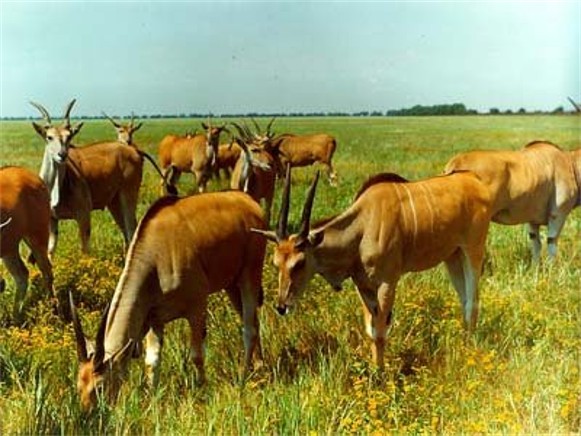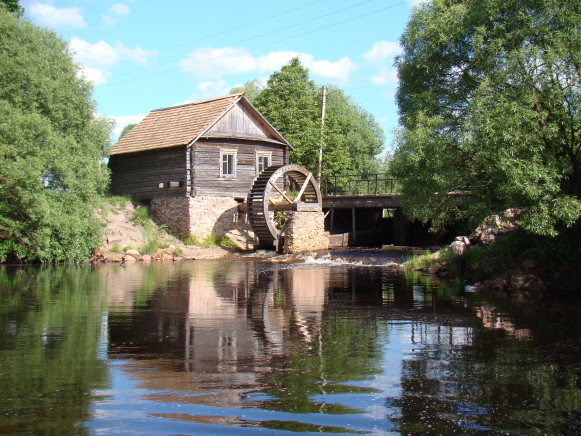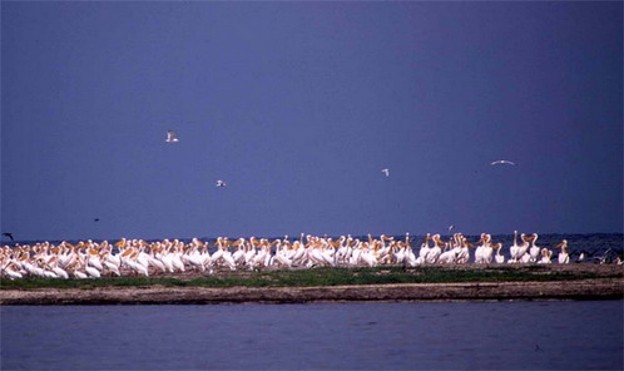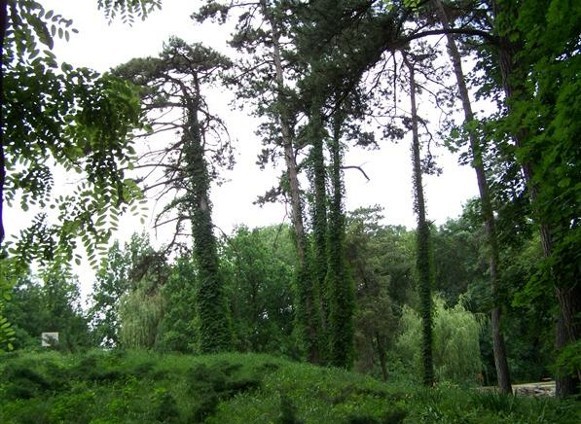Nature preserves
Nature preserves (природні заповідники; pryrodni zapovidnyky). Territories recognized as having intrinsic value that are designated for protection from commercial exploitation so that their natural characteristics will be maintained. In Ukraine a system of different kinds of nature preserves has evolved. The preserves differ in the scope of their protection activities, the jurisdiction under which they serve, the size of the territory they control, and the extent to which they are open to the public for popular education and outdoor recreation. The need for establishing a system of nature preserves and national parks in Ukraine emerged as a result of the widespread and increasingly intensive use of land for agriculture, the growth of large-scale exploitation of forests and minerals, and rapid industrialization and urbanization. As of 2007, the total area of all types of protected areas, nature preserves, and parks in Ukraine is approximately 2. 8 million ha which represents about 4.7 percent of the total land area of Ukraine. Green space for public outdoor recreation is also maintained in the form of parks and gardens.
Nature preserves represent the principal focus of Ukraine's nature preservation effort. The system was initiated in the former USSR shortly after the Revolution of 1917, and by 1988 it encompassed more than 150 nature preserves, of which 12 were in Ukraine. They were the Askaniia-Nova Nature Reserve, Black Sea Nature Reserve, Danube Shoals Nature Reserve, Carpathian Nature Reserve, Kaniv Nature Reserve, Kara-Dag Nature Reserve, Luhansk Nature Reserve, Cape Martian Nature Reserve, Polisia Nature Reserve, Roztochia Nature Reserve, Ukrainian Steppe Nature Reserve, and Yalta Mountain and Forest Nature Reserve. Their total area (1985) was approx 140,000 ha. Other nature preserves established on Ukrainian ethnographic territory beyond the borders of Ukraine were the Caucasian Nature Reserve (in Krasnodar krai), the Les na Vorskle preserve (in Belgorod oblast), and the Prypiat preserve (in Homel oblast, Belarus).
Preserves were established primarily to function as scientific research facilities and to promote biosphere conservation activities. They also preserve representative portions of a particular type of landscape or biome, such as steppe, estuary, or forest ecosystems, and are sometimes called ‘standards of nature’ (etalony). Some nature preserves, such as the Ukrainian Steppe Nature Reserve, are made up of several discontinuous sections so that isolated remnant enclaves of biotic importance will be preserved. The nature preserves are not intended to have any significant tourist function; that role is assigned to the national parks.
Today, protected areas in Ukraine are divided into eleven categories of territories and objects of national or local importance. The first category consists of nature preserves that have been given a supplemental title, that of a biosphere reserve, under the United Nations’ Man and the Biosphere program. As of 2007, four nature preserves in Ukraine, the Askaniia-Nova Biosphere Reserve, the Black Sea Biosphere Reserve, the Danube Biosphere Reserve, the Carpathian Biosphere Reserve and the Uzhanskyi National Nature Park as a constituent part of the trilateral East Carpathian Biosphere Reserve, are so designated. Apart from that there are 17 national parks and 45 regional landscape parks in Ukraine.
Game (hunting) preserves (zapovidno-myslyvski hospodarstva) are a companion category of partially protected areas. In Ukraine there are four such units: the Azov-Syvash Game Preserve (mostly for protecting migratory birds and providing wintering sites), the Crimean Game Preserve (for protecting the forests and their fauna—the deer, the roe deer, and the mouflon), the Dnipro-Teteriv Game Preserve, and the Zaliske Game Preserve (both within short driving distance of Kyiv). In addition the Bilovezha Forest hunting preserve (for protecting European bison, deer, wild boar, and elk) is located near the Ukrainian border in Brest oblast, Belarus.
Wildlife refuges (zakaznyky) constitute a category of smaller parcels of land or bodies of water designated for the purpose of protecting some elements of nature (usually an endangered plant or animal species) but not the entire natural complex (as in the case of the nature preserves). The most common wildlife refuges are established for the purpose of protecting valuable animals and birds by disallowing hunting for 10 years or more. Fishing refuges are established for the protection of spawning grounds or young fish. A landscape wildlife refuge may serve to protect a picturesque river valley or a lake with scenic shores. Small plots of forest, steppe, or wetlands may be designated zakaznyky for the protection of their unique complex of plants. As of 2007, there are 2709 wildlife refuges in Ukraine.
Regulations that govern human activities on wildlife refuge sites are determined by the government of Ukraine, the regional departments responsible for the protection of nature, and the local executive committees. Activities incompatible with the purpose of the refuge, such as hunting, fishing, logging, grazing, hay cutting, and mining, are usually forbidden on the territory of a wildlife refuge.
Monuments of nature (pamiatky pryrody) are a subcategory of landscape parks; the term is usually applied to a specific feature, such as a cave or a waterfall. They are more commonly of local rather than state significance. Either the broader regulations of the zapovidnyk or the narrower restrictions of the zakaznyk apply to a monument of nature, according to the requirements of the feature to be protected. As of 2007, there are 3078 officially protected monuments of nature in Ukraine.
Preserved sites (zapovidni urochyshcha) are also a subcategory of landscape parks; the term is applied to somewhat larger features, such as riverbanks and small lakes. Again, the restrictions of either the broader zapovidnyk or the narrower zakaznyk type apply.
BIBLIOGRAPHY
Lavrenko, Ie. Okhorona pryrody na Ukraïni (Kharkiv 1922)
Okhorona pam'iatok pryrody na Ukraïni, 2 vols (Kharkiv 1927–8)
Shalyt, M. Zapovedniki i pamiatniki prirody Ukrainy (Kharkiv 1932)
Okhorona pryrody na Ukraïni (Kyiv 1957)
Chervona knyha Ukraïns’koï RSR (Kyiv 1980)
Pryrodookhoronni terytoriï Ukraïns’koï RSR (Kyiv 1983)
Zaretskii, V. Territorial'nye aspekty okhrany okruzhaiushchei sredy (Lviv 1985)
Zapovedniki Ukrainy i Moldavii (Moscow 1987)
Philip Pryde, Ihor Stebelsky
[This article was updated in 2009.]



.jpg)

